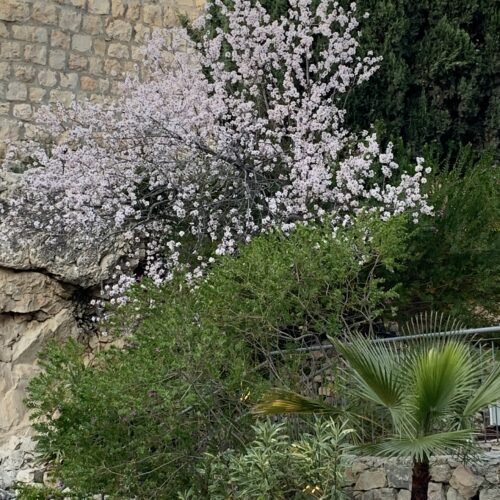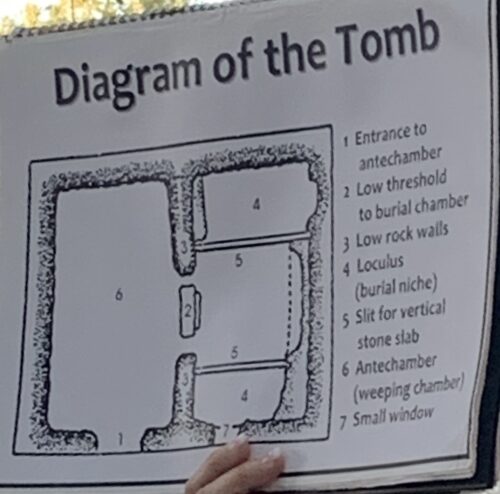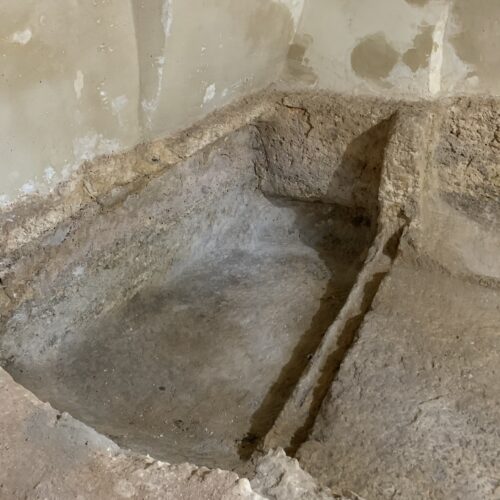I grew up going to church on Good Friday to observe The Stations of the Cross. The Stations of the Cross is a Catholic devotion depicting the passion of Jesus from condemnation to crucifixion. On my March 2020 pilgrimage to Israel with my church, I was not surprised that the exact location of His death burial and resurrection were disputed, but I was surprised to learn that there are actually two separate sites commemorating these events. Walking the Via Dolorosa (Jesus’s route to Golgotha), in Jerusalem, was surreal. It starts where Jesus was condemned by Pontius Pilot in what is now the Muslim section of the city, and ends in what is now the Christian section of the city in the Church of the Holy Sepulchre. The streets were crowded and lined with merchants, which seemed distracting to me, but tradition tells that the streets were also lined with people on the day that Jesus carried His cross.
In 326 AD Queen Helena, the mother Constantine, visited the Holy Land to preserve the sites important to Christianity and to identify the site of the crucifixion and burial of Jesus. She located a site that she believed fulfilled the Gospel accounts of the crucifixion. Ten years later Constantine built a church on the site. That church was destroyed and rebuilt two times and is now the site of the Church of the Holy Sepulchre.
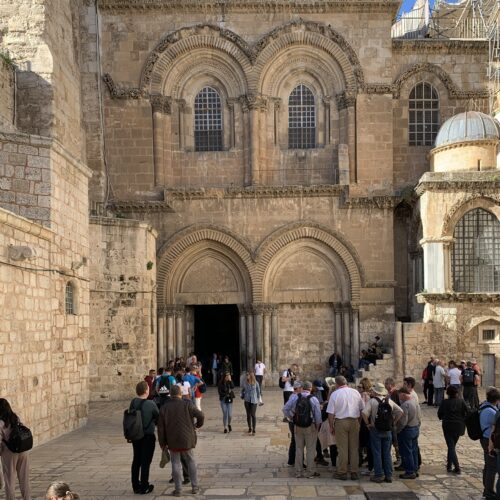
Church of the Holy Sepulchre 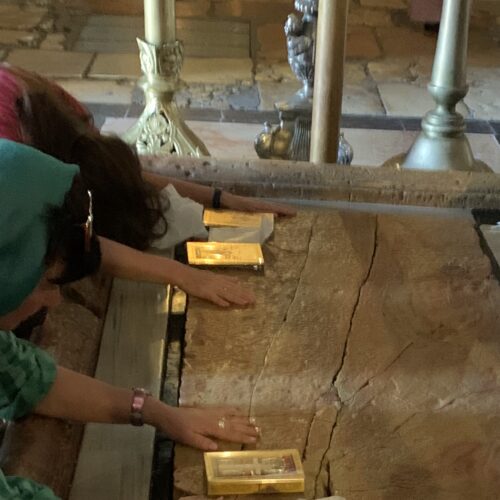
The slab on which the body of Jesus is thought to have been prepared for burial
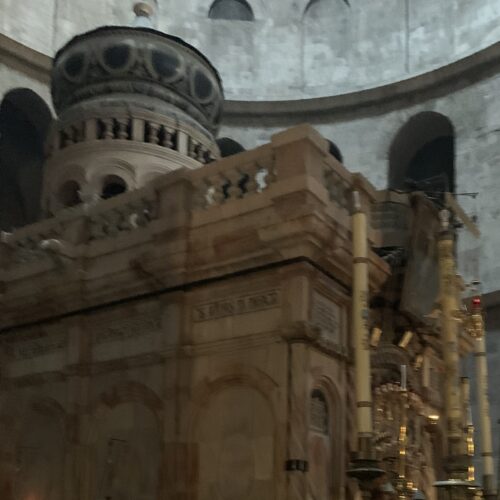
Ornate structure built over the site some believe to be the burial site of Jesus 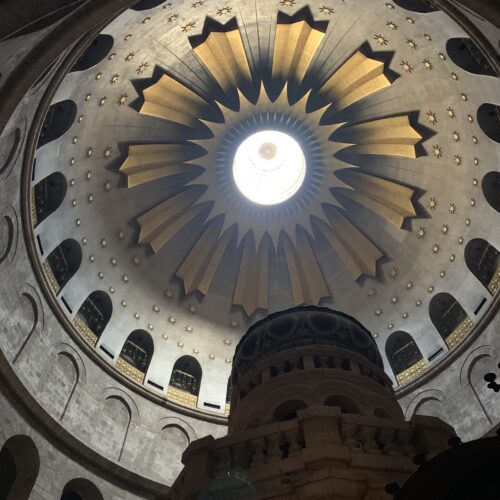
Beautiful dome in the Church of the Holy Sepulchre
Although the Church of the Holy Sepulchre was long accepted as the location of Christ’s death and resurrection, in 1842, another site was identified as more closely adhering to the Gospel accounts of Golgotha (the place of the skull).
The Garden Tomb is outside of the city, near a rocky slope bearing a likeness to a human skull.

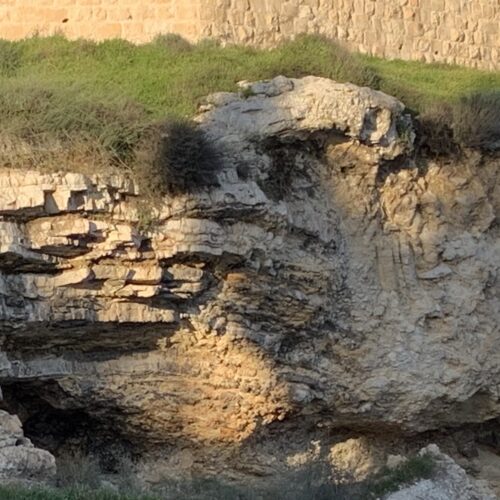
Can you see the “skull” on this hill?
This hill is close to Jerusalem, yet outside of its walls. Hebrews 13:12 holds that “Jesus suffered and died outside the city gates.” John 19:41 reads, “At the place where Jesus was crucified, there was a garden, and in the garden a new tomb, in which no one had ever been laid”. An ancient wine press was discovered near the tomb, which indicates that there once was a garden at this site.
“Joseph took the body, wrapped it in a clean linen cloth and placed it in his own new tomb that he had cut out of the rock. He rolled a big stone over the entrance of the tomb and went away.” Matthew 27:59-60.
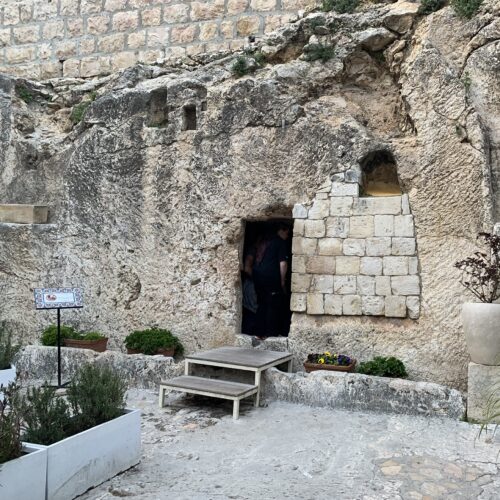
You can clearly see the stone trough where a large stone could be rolled over the entrance 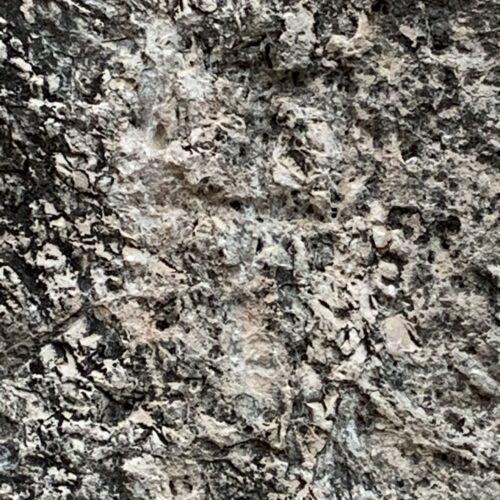
Can you see the cross etched into the stone outside the entrance of the tomb?
Mark 15:43 reveals that Joseph of Armathea was a member of the Sanhedrin. Matthew 27:57 tells us that Joseph was a rich man. A rich man was likely to have a large tomb, very much like The Garden Tomb.
The Garden Tomb was peaceful. Serene. I could clearly see the skull in the side of the hill and I understand how the Scriptures line up with this being the very place where Jesus was crucified, died, was buried and rose again. Having been to both The Garden Tomb and the Church of the Holy Sepulchre, I found it much easier to pray, be still, and draw near to a Jesus at The Garden Tomb. And that is, ultimately, the goal.
Our group wrapped up the day reading Scripture and taking Holy Communion.
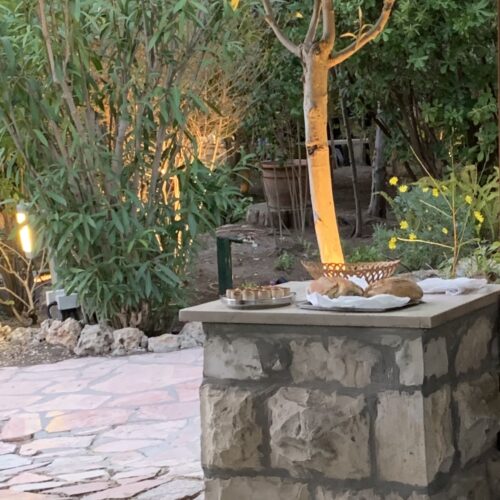
Holy Communion at The Garden Tomb 
Our group photo in Israel
Writing this article reminded me how much I enjoyed The Garden Tomb and how much I’d like to go back. My friend, Karen, was my roommate on this trip. It was Karen’s second trip to The Holy Land. Before we left I couldn’t understand why she want to go to Israel two years in a row-now I understand!
If you are considering a trip to The Holy Land, I’d love to talk with you about it. If you’ve already been to The Holy Land, I’d love to talk with you about it. Or if you’d just like to talk about Jesus or The Holy Land please contact me!






